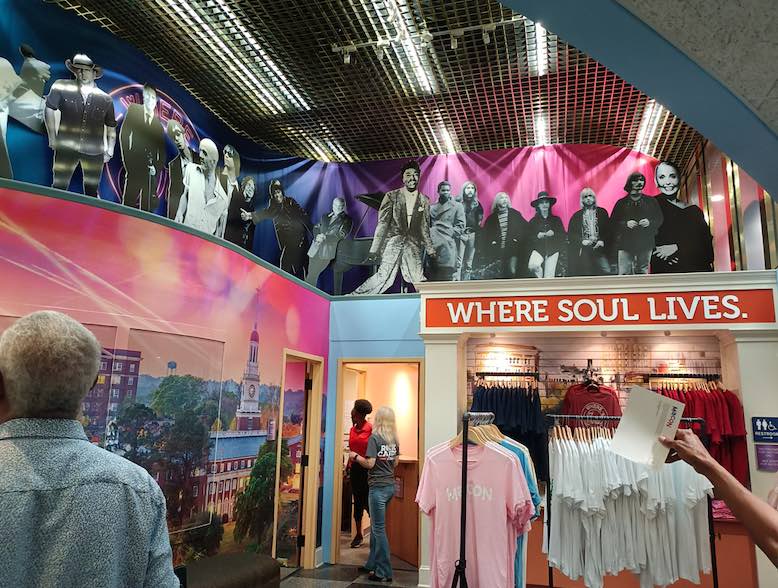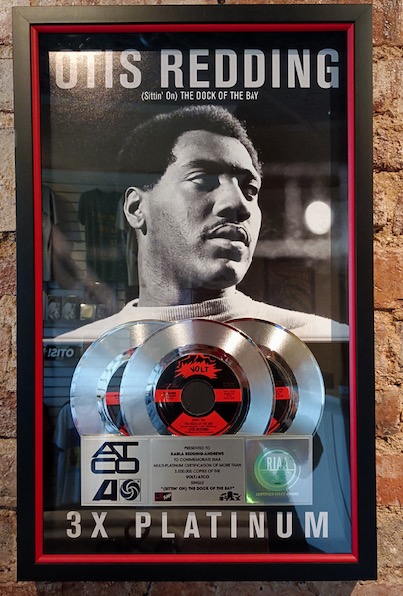“I try to write songs that people can relate to, that touch their hearts and make them feel something.” Otis Redding
Macon, Georgia is located in the Piedmont province on the west bank of the Ocumulgee River, in the place where soul was created and is sustained. The area was settled in 1806 under the auspices of Thomas Jefferson when he established a military outpost, Fort Hawkins, and a center for trading with the natives in the then Indian Territory. #VisitMarconGA
The Cherokee, Muskogee and Uchee Indians ceded the territory and in 1823 and Macon, named after Senator Nathaniel Macon, was born. Ocumulgee Mounds National Historical Park stands as a starkreminder of 17,000 years of native culture. A highlight of the site is the rebuilt Earth Lodge with a 1,000-year-old floor.
The earliest group of enslaved Africans in the region accompanied the Spanish Explorers, most notably among Lucas Vázquez de Ayllón's 600 colonists in 1526. Later the majority of the enslaved from Charleston, Savannah and St. Augustine. Whenever and wherever Africans went they carried their music with them in the form of instruments, dance and song. The music eased the daily burdens, expressed religious beliefs, emotions and celebrated small victories and joys.
Soul music is a blending of blues, gospel, jazz and is defined by the Rock and Roll Hall of Fame as the “music that arose out of the black experience in America.” Soul music is participatory in that the audience is encouraged to dance, sing, clap, respond, etc. It was popularized in America in the 60s and 70s and went on to be influential worldwide. Macon, Georgia emerged as the womb of Southern rock and soul music and the spiritual and physical home of the Allman Brothers, Little Richard and Otis Redding.
The annual King of Soul Music Festival honors Redding’s ongoing contributions to music and culture as well as his personal legacy. The festival benefits the Otis Redding Foundation for the Arts and its current goal is to erect a center with labs, studio space and an amphitheater. Otis Redding’s stated in 1967 his desire to establish a summer camp for children and teach economic and civic responsibilities.
Otis Redding Museum relates the story of Redding’s life through a curated series of photographs, artifacts and memorabilia. An on-site shop enhances your tour with unique books and customized items.
The Allman Brothers, 70s pioneers of Southern rock, lived in The Big House, along with their posse, from 1970 to 1973. Now a museum, each room is a gallery dedicated to an aspect of their music. Nearby H&H Soul Food was a particular favorite of the Allman Brothers and other musicians.
Little Richard House Resource Center is charged with preserving his childhood home. The Architect of Rock and Roll, Richard Wayne Pennimen, was born in Macon on December 5,1932. His home is on view at 416 Craft St. A birthday celebration will be held Dec. 4- 7.
Macon was designated one of the 2024 Great American Main Street Award winners for excellence in historic preservation. The city has fifteen historic districts with more than 6,000 structures, on the National Register of Historic Places. Visitors can access a “Tour Mobile” app that interprets African American sites along the "Black Heritage Trail" trail. The Macon Visitor's Center creatively presents the people and history of the city. Highlights are a giant music legends mural and a literal walk -through history. A one-hour guided riding tour is offered that includes the major sites.
The Tubman Museum is a jewel in Macon’s crown. Highlights of the exhibits are a 63-foot-long mural depicting the African American experience from Africa to the 21st-century and an outstanding gallery display on the life and career of Tyler Perry. The Tubman is one of the largest museums of its type in the region.
Charles Douglass built the Douglass Theater in 1921. The theater was one of the first black owned theaters and presented all of the renowned entertainers of the era. It was on the Chitlin Circuit. Otis Redding won the singing competition here so often that he was barred from the competition. The Douglass has been lovingly restored and tours are available.
The Macon Terminal Station was constructed in 1916 by the architect who built Grand Central Station. The station closed in 1975 but the city elected to retain the exterior carved sign reading “Colored Only” as a memorial.
Hotel Forty Five is located in the Business District and is within walking distance of the most significant locations. It is a full-service boutique hotel with three dining venues. There are 94 guestrooms, deluxe amenities and designer touches with a music theme. Hotelfortyfive.com
“If these streets could talk, they’d sing.”






No comments:
Post a Comment